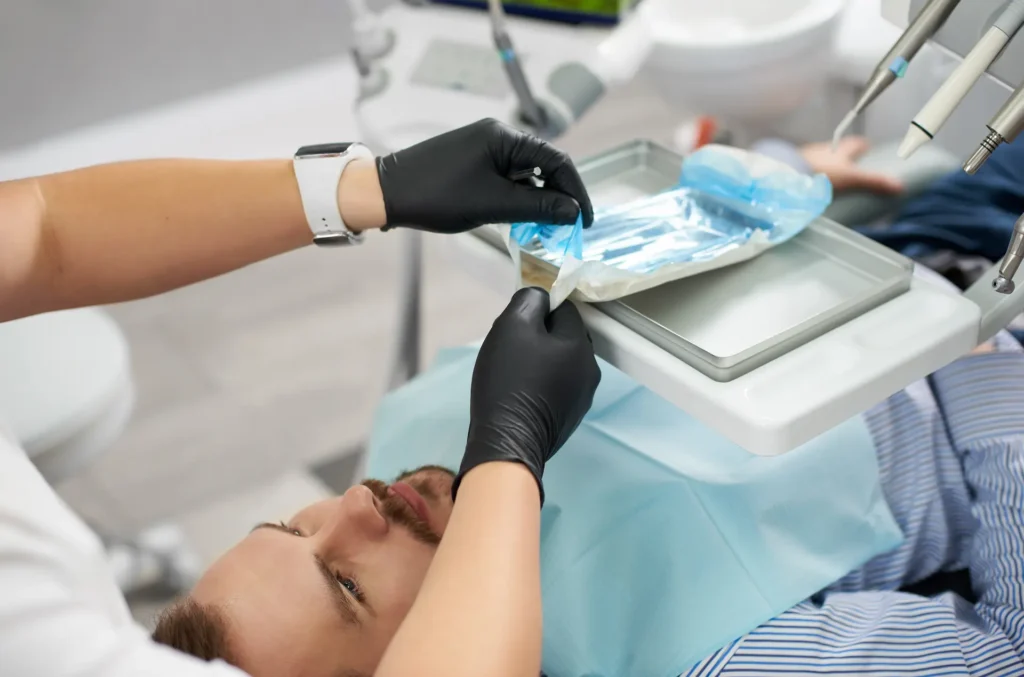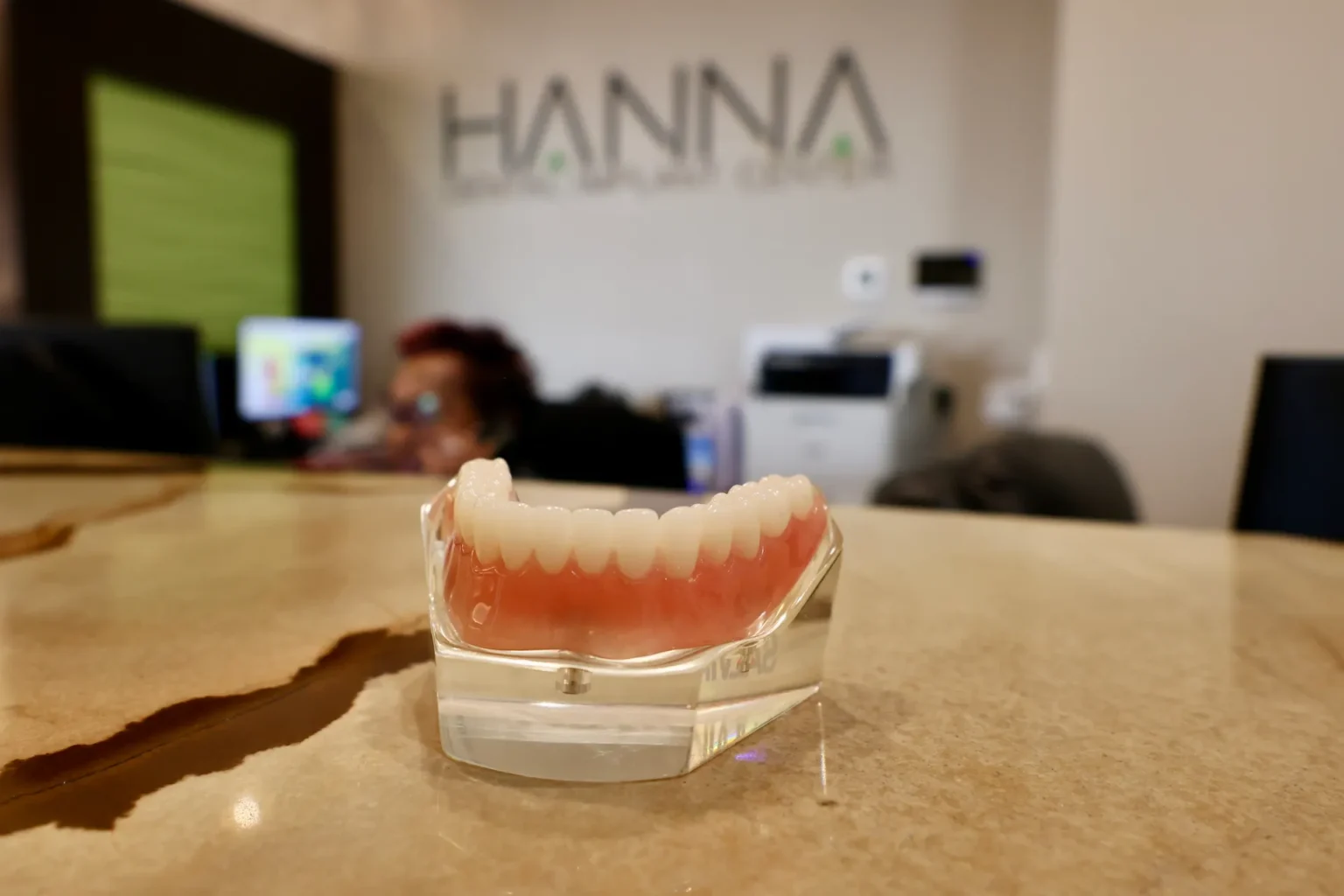Are you considering dental implants as a solution to restore your smile and oral health? The journey from contemplating the idea to flashing that confident smile can be both exciting and daunting.
In this article, we’ll walk you through the dental implant healing stages, ensuring you have a clear understanding of the process and what to expect.
What are dental implants?
Dental implants are remarkable artificial tooth roots designed to replace missing teeth. If you’re dealing with one or more missing teeth, these small and sturdy devices can provide you with a natural-looking, long-lasting solution.
Why should you consider getting dental implants?
As adults, once natural teeth fall out due to aging or accident, they will never grow back. This is where a dental implant comes in to help fill the gap left by the lost teeth. And while dental implants have pros and cons, the benefits outweigh the cons. Here are some of the benefits of having a dental implant:
- Dental implants help you smile confidently and enhance your oral health.
- Implants blend seamlessly with your existing teeth, ensuring your smile looks natural and complete.
- Dental implants help to improve chewing and speaking.
- They are durable and last for a lifetime if properly maintained.
- They help maintain the health of your jawbone, preventing it from deteriorating due to missing teeth.

The dental implant process: An overview
Before we explore the healing stages, it’s essential to understand the steps involved in implant surgery. These stages of surgically placing dental implants have a direct impact on the time it takes for a patient to recover. Let’s take a look at the process you can expect:
Initial consultation
The initial consultation marks the beginning of your dental implant journey. During this crucial stage, your dental team will guide you through various aspects, including treatment options and costs, taking impressions for study models, and discussing your medical history for any contraindications.
In this consultation, your dentist will work with you to determine the most suitable treatment plan. This may include discussing the type of dental implant, the number of implants needed, and the associated costs. It’s also a time for you to ask any questions and address any concerns about the procedure.
Your medical history is a crucial aspect of the consultation. Your dentist will review your overall health and discuss any existing medical conditions or medications you’re taking. This is important to ensure dental implant surgery is safe and suitable for you.
By the end of this stage, you’ll have a clear understanding of your treatment plan, associated costs, and whether you’re a suitable candidate for dental implants.
Impressions
This is the stage where the dentist will take dental imprints of your teeth and mouth. These imprints will be used to create a dental cast, which the dental lab will use to create your dental crowns for implants.
At this stage, the materials for dental implants will also be chosen. Dental porcelain, ceramic, dental gold, and dental titanium are all common materials for dental implants.
Your dentist will also go over your dental health history once again to confirm you are a candidate for surgery. For example, if your teeth have severe plaque or tartar buildup, they may prescribe a dental cleaning before inserting implants.
Extractions (if necessary)
Some patients have already lost teeth due to aging or accidents and do not require extractions before the implant surgery. Other patients may require dental extractions if their teeth are badly decaying, diseased, or damaged.
The dental surgeon will remove all the unhealthy teeth before cleaning the region where the dental implant will be placed. This is done to avoid infection and ensure a successful dental implant operation.
Bone grafting (if necessary)
Implant surgery requires sufficient bone height and width to insert the dental implant. If a patient’s jaw lacks sufficient healthy bone tissue, the dental surgeon must perform a bone grafting treatment.
This is a frequent dental implant healing stage that involves transplanting healthy bone from another region of your body into the jawbone where the dental implant will be placed.
Depending on the patient’s state and oral health, the dental surgeon may also use bone grafting material instead of a natural dental transplant. Usually, after bone grafting, a patient will experience some dental injury or trauma to the soft tissues of the mouth and will require healing time before implant surgery may be conducted.
Implant surgery
The implant surgery stage is where your specialist will perform the dental implant surgery. This is a pivotal phase in your journey to regain confidence and a complete smile. The implant surgery involves these key steps:
Placing the titanium implant
Your surgeon will carefully position the titanium implant into your jawbone. This implant serves as the artificial root for your new tooth. The procedure is precise, and your dental team ensures the implant is securely in place.
Closing the gum tissue
Once the implant is in position, stitches are used to close the gum tissue over the implant. This step is essential for protecting the implant and allowing it to heal properly.
Recovery time
After the surgery, your body needs time to heal properly and for the implant to fuse with your jawbone. This process, known as osseointegration, typically takes 3 to 6 months. During this period, it’s important to follow your dentist’s post-operative instructions for a successful healing process.
The implant surgery is a critical step in your journey towards a new smile as it sets the foundation for your dental implant to function as a natural tooth. Because the healing and osseointegration period are so important, we need to cover it in more detail. Let’s take a closer look:
Healing and Osseointegration
After the implant surgery, the focus shifts to the healing and osseointegration stage. Osseointegration is a remarkable process where the implant fuses with your jawbone. This fusion provides the stability needed for your new tooth to function naturally. It’s a slow but essential phase of the journey.
During the healing period, it’s vital to be gentle with your new implant. Stick to a soft diet to avoid putting excessive pressure on the implant site. Limit strenuous physical activities during this time to support the healing process.
Your dentist will schedule follow-up appointments to monitor the progress of osseointegration and the overall healing. These appointments ensure that everything is on track for your new tooth to be successful.
Abutment and Crown Placement
In most cases, patients can benefit from same-day dental implants, which means you can have your implant surgery and walk out that same day with a full smile. In most cases, a final will be placed. If not, a temporary crown is placed and once the implant site is healed, your dental specialist can give you your final restoration.
Once the implant has fully integrated with your jawbone, it’s time to move on to the next stage: abutment and crown placement. Here’s what happens during this part of the process:
Abutment attachment
An abutment, a small connector post, is attached to the implant. This abutment serves as the foundation for your crown. It’s carefully placed to ensure a secure and stable connection.
Crown placement
The crown, which is the visible part of your new tooth, is then fitted onto the abutment. This crown is custom-made to match the shape and color of your natural teeth, ensuring a seamless and natural appearance.
Additional X-rays
Your dentist may take additional X-rays to make sure the crown is correctly positioned and that it fits perfectly. These images help confirm the success of the implant procedure.

How to maintain and care for your new dental implants
After your implant surgery, healing, and crown placement, it’s essential to maintain and care for your new tooth. Here’s what you should keep in mind:
Brush implants like natural teeth
Treat your dental implant just like your natural teeth. Brush it gently with a soft-bristle toothbrush and fluoride toothpaste. Ensure you clean all sides and angles thoroughly.
Use interdental brushes and floss
Cleaning between teeth is crucial for oral health. Use interdental brushes or dental floss to remove plaque and food particles around the implant. Keeping the area clean helps prevent gum disease and maintains your implant’s health.
Schedule regular dental checkups
Don’t skip your regular dental checkup appointments. Your dentist will monitor your implant’s condition and overall oral health. They can identify any issues early and provide timely solutions.
Always go for professional cleanings
Professional cleanings by a dental hygienist are essential for maintaining your implant’s health. These cleanings reach areas that regular brushing and flossing may miss.
Monitor implant and report changes
Be attentive to any changes around your implant. If you notice pain, swelling, or any unusual sensations, report them to your dentist promptly. Early detection and treatment can prevent potential issues.
With proper maintenance and care, your dental implant can continue to function effectively and provide you with a beautiful and functional smile.
Implant Failure and Replacement
Dental implant failure is an infrequent occurrence, but it can happen for various reasons. These reasons might include infection, improper integration, or other complications.
In the unfortunate event of implant failure, additional surgery may be necessary to remove the failed implant. This step is crucial to ensure your oral health is not compromised.
After removing the failed implant, your dentist may recommend a new implant placement. This typically requires additional healing time before the new implant can be installed.
Single vs. Multiple Implants Dental Procedure
The choice between single and multiple implants when getting a dental implant can vary, depending on your specific dental needs and the extent of your tooth loss. Your dentist will help you decide which option is best for your situation. However, it is important to understand the differences between single and multiple implant scenarios:
Healing and procedure differences
Healing and the implant procedure differ when it comes to single implants compared to multiple implants. Single implants typically have a shorter recovery period, while multiple implants may require more time.
Additional bone grafting or extractions
For full-mouth implants or cases with multiple missing teeth, additional procedures like bone grafting or tooth extractions may be necessary to ensure the implants have a strong foundation.
Immediate load implants
In some cases, immediate-load implants can be used for single or multiple teeth. These implants allow for temporary teeth to be placed during the healing process, ensuring you don’t go without a smile.
Whether you need single or multiple implants, the dental team at Hanna Dental Implant Center will provide a tailored treatment plan to address your unique needs and ensure the best outcome for your smile.
Choose Hanna Dental Implant Center for a brighter and more confident smile
Your dental implant journey involves several stages, from the initial consultation to the final placement of your new tooth. The process may have its nuances, but it’s all worth it for a restored, confident smile.
We understand that deciding to get dental implants is a significant step. The benefits are clear: improved oral health, restored self-confidence, and the ability to enjoy your favorite foods without worry.
If you’re ready to take the next step in your dental implant journey, we’re here to help. Hanna Dental is committed to providing exceptional care and guidance throughout the process. At Hanna Dental Implant Center, our experienced team of dentists and dental implant specialists is here to assist you every step of the way. Our team is highly trained to provide the latest dental implant solutions in Houston, Texas.
Our holistic approach to dentistry offers a range of benefits that ensure a positive experience and exceptional results. To avoid the complications of infection after a dental implant procedure, we give our patients specific and personalized instructions on maintaining excellent oral hygiene.
When you choose Hanna Dental, you choose a team dedicated to oral health, comfort, and satisfaction. Contact us today to schedule a free consultation and take the first step towards having a confident smile.
Frequently Asked Questions
How do I know if my dental implant is healing correctly?
You know your dental implant is healing correctly when the following occurs:
- There is minimal pain or discomfort after the initial healing period.
- There is no persistent swelling or redness around the implant site.
- No unusual or foul odors.
- Steady improvement in the ability to chew and bite comfortably.
However, it’s crucial to attend follow-up appointments with your dentist for a professional assessment of your implant’s healing progress.
What is the healing timeline for dental implants?
The healing timeline for dental implants typically involves several stages:
- Initial healing after surgery: 2-6 weeks.
- Osseointegration (fusion with the jawbone): 3-6 months.
- Additional healing and monitoring: Ongoing through follow-up appointments.
The exact timeline can vary from person to person, so it’s essential to follow your dentist’s recommendations.
What are the 4 stages of dental implants?
The four main stages of dental implants are:
- Initial Consultation
- Implant Surgery
- Healing and Osseointegration
- Abutment and Crown Placement
These stages can all be done in one appointment and ensures the dental implant process progresses smoothly and successfully.
Can I chew on the implant healing cap?
It’s essential to avoid chewing on the healing cap. The healing cap is a temporary cover placed on the implant site during the healing process. Chewing on it can disrupt the healing and may lead to complications. Stick to a soft diet as advised by your dentist until the cap is removed.



